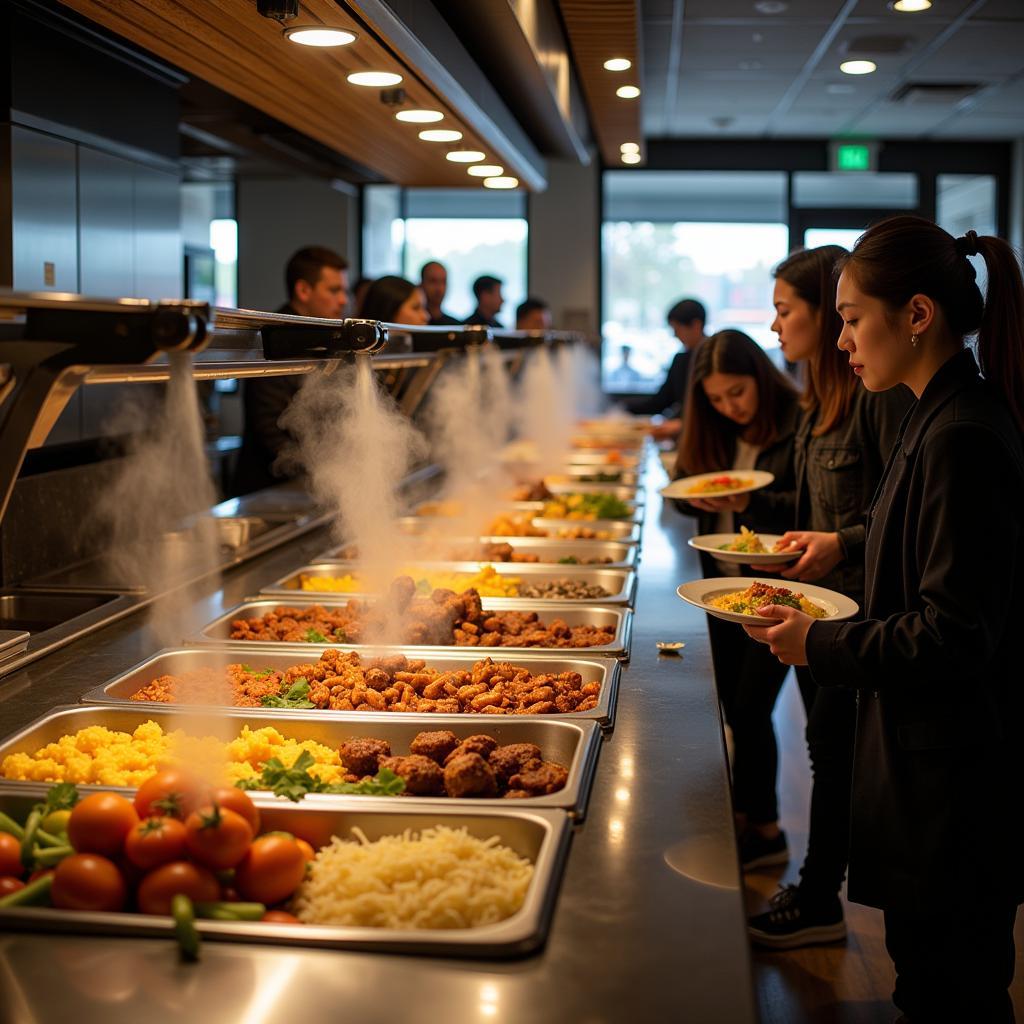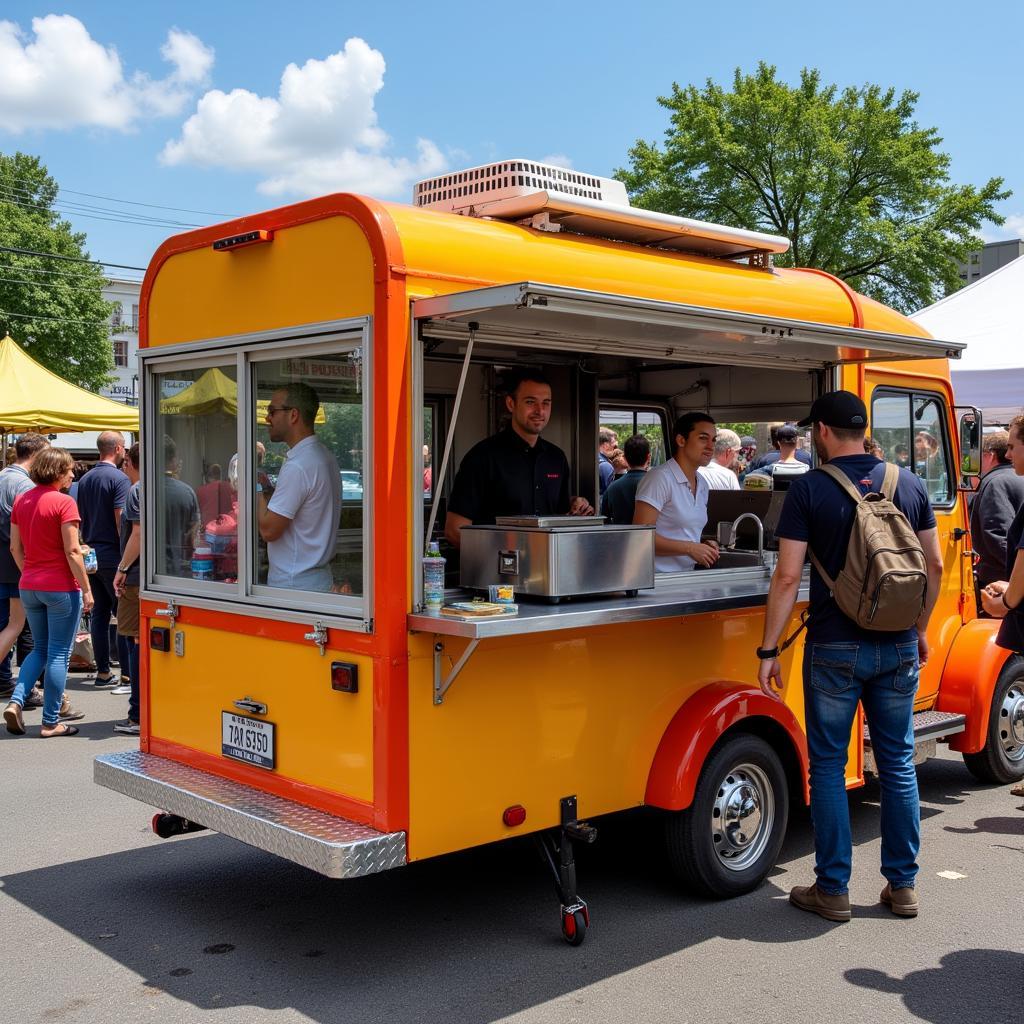Food Counters are essential in various food service settings, from bustling restaurants to cozy cafes and vibrant food trucks. They serve as the central hub where culinary creations are presented, orders are taken, and customer interactions take place. Understanding the different types of food counters, their functionalities, and design considerations can significantly impact the efficiency and overall success of a food business. Let’s delve into the fascinating world of food counters.
After a long day exploring the city, we stopped by a local market with a row of vibrant food counters, each offering a unique culinary experience. From sizzling stir-fries to freshly baked pastries, the sheer variety was mesmerizing. This experience sparked my curiosity about the pivotal role food counters play in the food industry.
Different Types of Food Counters: A Culinary Canvas
Food counters come in various shapes and sizes, each designed to cater to specific needs and functionalities. Understanding these distinctions is crucial for optimizing workflow and maximizing customer satisfaction.
Hot Food Counters: Keeping the Heat On
Hot food counters are designed to maintain the temperature of prepared meals, ensuring they remain piping hot and ready to serve. These counters are essential for buffets, cafeterias, and restaurants specializing in hot dishes. Maintaining optimal temperature is critical for food safety and enhancing the dining experience.
 Hot Food Counter at a Buffet Restaurant
Hot Food Counter at a Buffet Restaurant
Cold Food Counters: A Refreshing Display
Cold food counters, on the other hand, are designed to keep perishable items like salads, sandwiches, and desserts at safe and appetizing temperatures. These counters are commonly found in delis, cafes, and supermarkets. A well-maintained cold food counter not only preserves food quality but also enhances its visual appeal.
Portable Food Counters: Mobility Meets Culinary Delights
Portable food counters offer flexibility and mobility, making them ideal for catering events, food trucks, and pop-up shops. These counters are often equipped with wheels and compact storage, allowing for easy transportation and setup. Imagine a food truck serving gourmet burgers and fries from a sleek, portable counter – a testament to the versatility of these units.
 Portable Food Counter in a Food Truck
Portable Food Counter in a Food Truck
Designing the Perfect Food Counter: Form and Function
The design of a food counter plays a crucial role in both aesthetics and functionality. Considerations such as material, layout, and lighting can significantly impact the customer experience and operational efficiency.
Material Matters: Durability and Aesthetics
Choosing the right material is paramount for food counters. Stainless steel is a popular choice due to its durability, hygiene, and ease of cleaning. Other materials like wood or laminate can add a touch of warmth and character, depending on the establishment’s style. For instance, a rustic cafe might opt for a wooden food counter to complement its ambiance.
Layout and Workflow: Optimizing Efficiency
A well-planned layout is essential for smooth operations. The placement of equipment, storage, and the serving area should be strategically designed to minimize movement and maximize efficiency. A chaotic counter can lead to delays and customer dissatisfaction.
Lighting: Enhancing Presentation
Proper lighting can significantly enhance the visual appeal of food, making it more appetizing to customers. Warm lighting can create a cozy atmosphere, while brighter lighting is ideal for showcasing vibrant dishes. Think of a bakery displaying its colorful pastries under strategically placed lights – a feast for the eyes.
Food Truck Counters: Taking Cuisine on the Road
Food truck counters represent a unique subset of food service design, demanding compact efficiency and robust portability. These mobile kitchens require specialized counters that can withstand the rigors of the road while maintaining functionality. Check out our selection of food truck counters for innovative solutions. You might also be interested in a food warmer truck for sale.
Conclusion: The Heart of the Food Service Experience
Food counters are more than just surfaces; they are the heart of the food service experience. From displaying culinary creations to facilitating customer interactions, they play a vital role in the success of any food establishment. By understanding the different types, design considerations, and functionalities of food counters, businesses can create a seamless and enjoyable experience for both staff and customers. Need a sneeze guard for your food counter? We’ve got you covered! Also, check out our food on first collection. Have you ever considered a commercial food warmer?
FAQs
- What are the different types of food counters? (Hot, cold, portable)
- What materials are commonly used for food counters? (Stainless steel, wood, laminate)
- What are the key design considerations for food counters? (Material, layout, lighting)
- Why is proper lighting important for food counters? (Enhances visual appeal)
- What are the benefits of portable food counters? (Flexibility, mobility)
- How can I improve the efficiency of my food counter layout? (Strategic placement of equipment and storage)
- Where can I find high-quality food counters for my business? (Mina Cones Food)
Scenarios
Scenario 1: A busy restaurant needs a hot food counter to keep their buffet items at the correct temperature.
Scenario 2: A cafe wants a cold food counter to display their pastries and desserts attractively.
Scenario 3: A food truck owner needs a portable and durable food counter for their mobile business.
Further Exploration
For more information on related topics, explore our articles on sneeze guards and food warmers.
Contact Us
For assistance, contact us at Phone Number: 02437655121, Email: minacones@gmail.com, or visit us at 3PGH+8R9, ĐT70A, thôn Trung, Bắc Từ Liêm, Hà Nội, Việt Nam. We have a 24/7 customer service team.